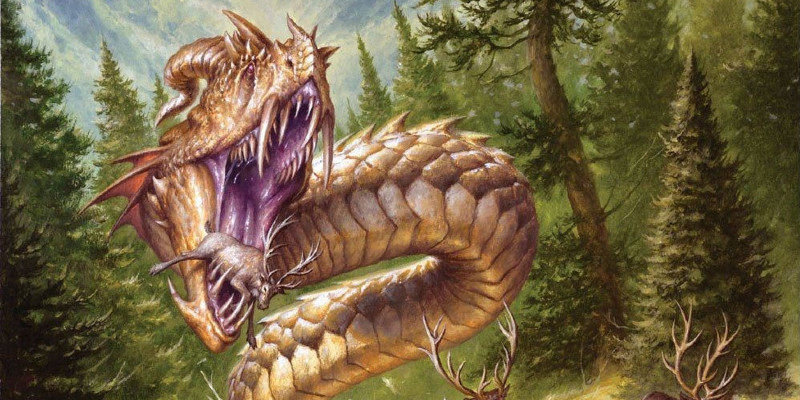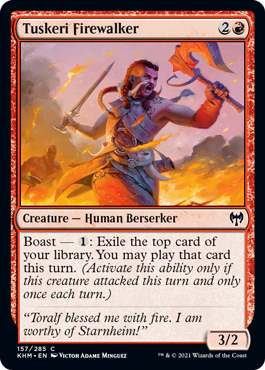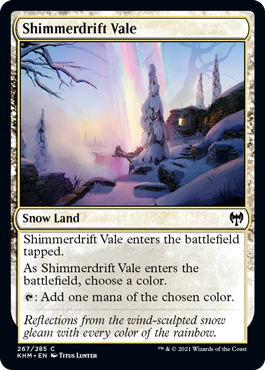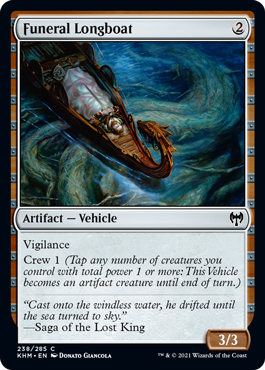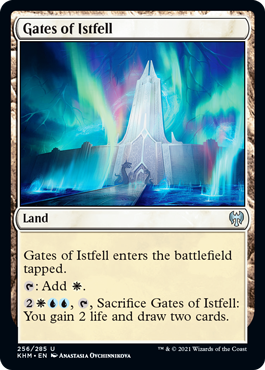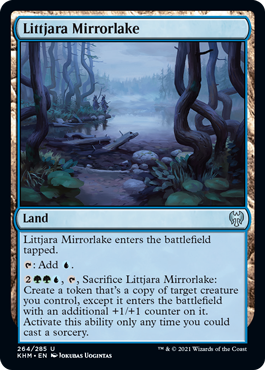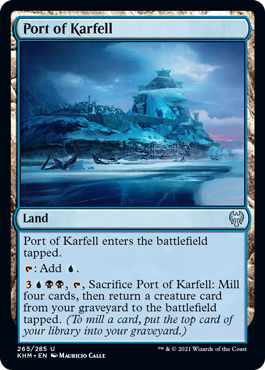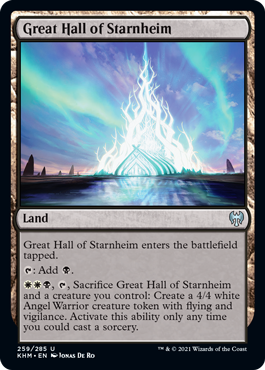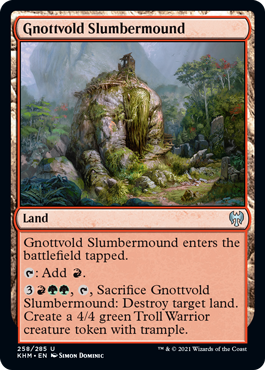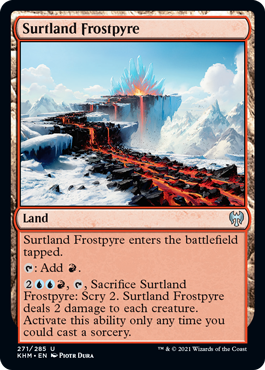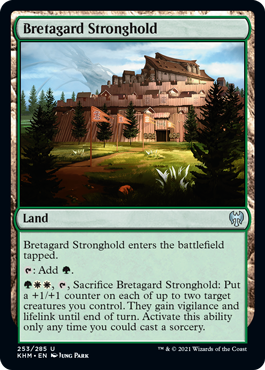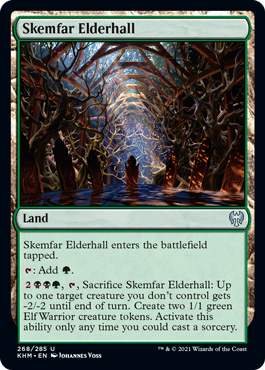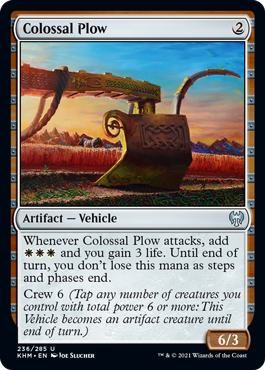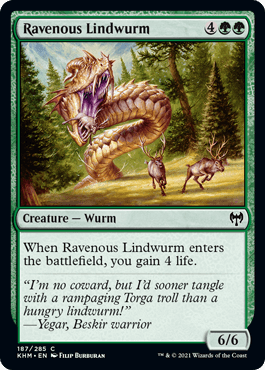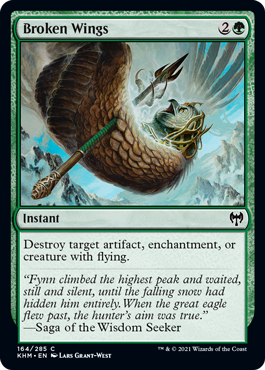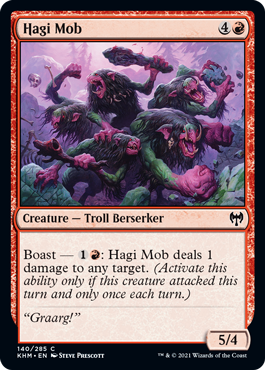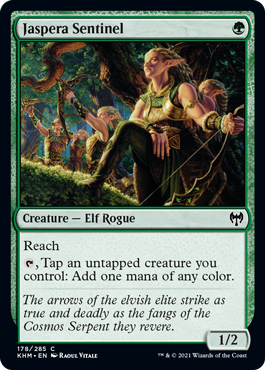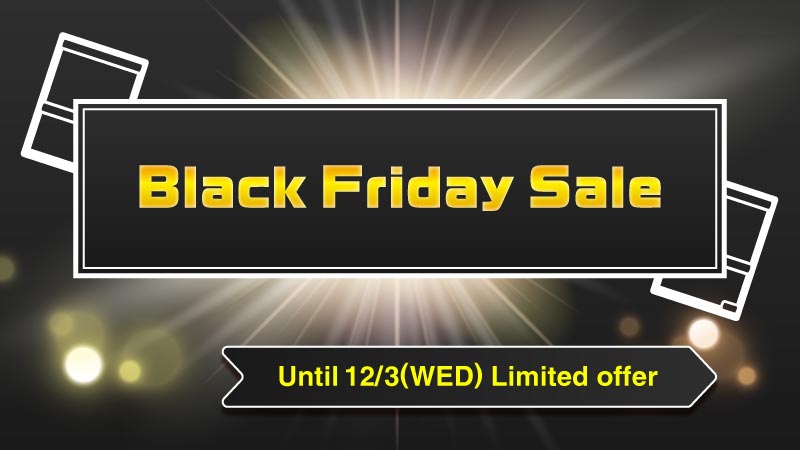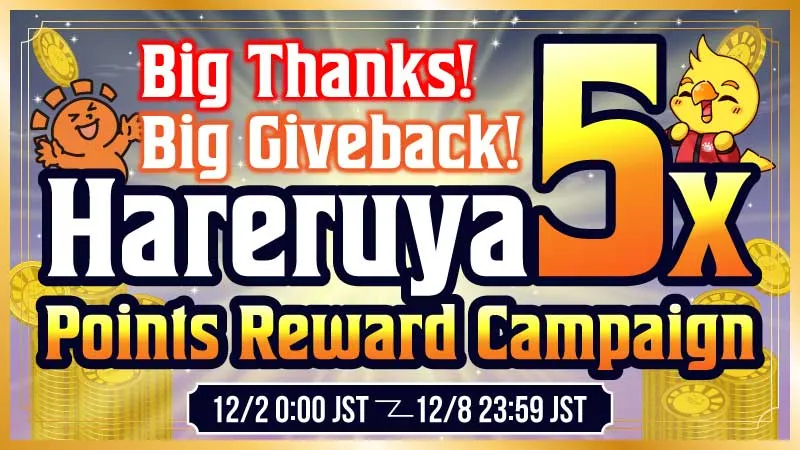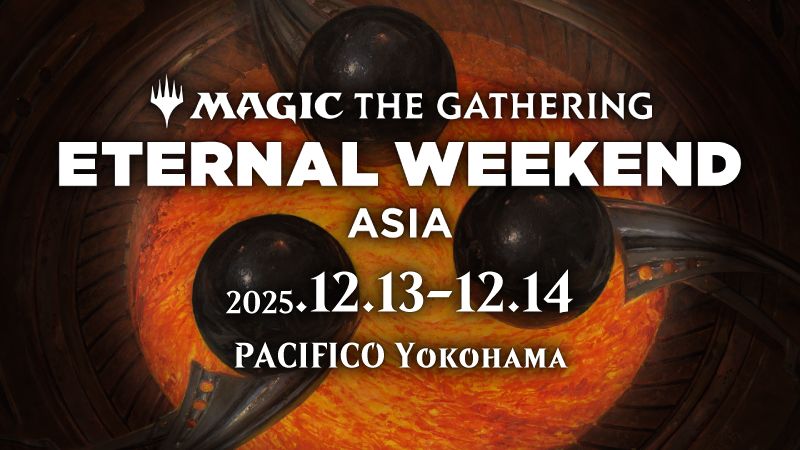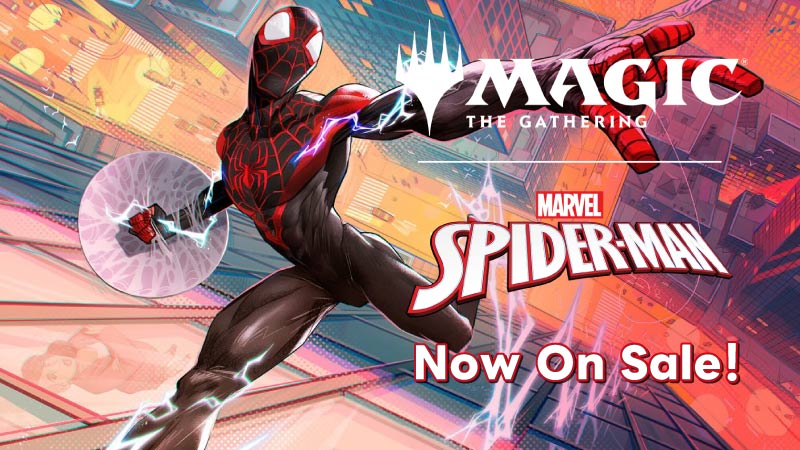Introduction
In February 21st, Magic Arena will host its first Arena Open in Sealed deck format. This is a great tournament that can transform your in-game gold into real dollars.
I am enjoying Kaldheim Limited and played plenty of games both in Sealed and in the Draft. Today, I want to go over how to play this Sealed format.
First, here is some great reading into Sealed deck theory:
- 2019/04/11
- Easy to Start, Hard to Master: the Ultimate Guide to Sealed
- Pascal Vieren
And here are articles on Kaldheim in particular from Hareruya Pros Limited experts:
- 2021/02/08
- An Introductory Book on Kaldheim Limited
- Marcio Carvalho
- 2021/01/26
- Welcome to Kaldheim
- Pascal Vieren
1. Best of 1 or Best of 3?
Arena allows both options to players, so which one to choose?
Personally, I am a big fan of Best of 3 Magic, especially in Limited formats. This is because it’s both fun and skill testing to find unexpected use of your sideboard cards to play around with the cards your opponent has shown you. Sideboarding can be the best way to maneuver around your opponent’s bombs, and I strongly believe that experienced players can really leverage their ability in the best of 3 matches.
The main argument to play best of 1 would be if you are not very experienced with the format and do not want to feel disadvantaged in sideboard games. This is fine reasoning and thus could mean that most inexperienced players would lean towards the best of 1.
Whichever your choice, it is important to be aware that each format has its own metagame. Mainly, be aware that in best of 1, you are more likely to face an aggro than in best of 3. This is both because the land fixing algorithm favors decks with low land counts, but also because one of the weaknesses of aggro in Sealed deck is that your opponent can sideboard into a lower curve to hold your strategy.
This does not mean that best of 1 will have a majority of aggro decks, just that they are more likely to appear compared to best of 3. I still expect the metagame of both formats to be defined by a slow multicolor deck, but if you need a tiebreaker between your last card choices in best of 1, lean more towards the card that will help you beat aggro.
2. The Default Deck in Kaldheim Sealed: Slow and Greedy
Multicolor decks are the strongest in Kaldheim Draft, and from what I’ve seen they are even stronger in the Sealed deck metagame.
The general theory is that while there are a few premium commons in the format (《Behold the Multiverse》 and 《Sarulf’s Packmate》), there is a big quality drop from the next best commons. Therefore, the bulk of power level is concentrated in uncommon and rares, and playing three or more colors allows you have played all of them from your pool.
Another particularity of Kaldheim is that Foretell makes it easier for decks to efficiently use their mana in the early game, and the existence of dual lands makes it easier to play multicolor.
This matches very well with general Sealed deck theory, where you want to build decks that maximize all the bombs in your pool.
Therefore, I expect most decks in Kaldheim Sealed to be multicolor and built towards the late-game. I would also expect that my opponents will have a higher-than-average number of bombs at their disposal.
The very first things I look at when I open my pool are my bombs and my mana fixers. I am happy when there is a high dual land count, 《Shimmerdrift Vale》 and 《Glittering Frost》, as this mean I’ll be able to play all of my good cards.
The one big difference between the multicolor Draft decks and the ones in Sealed is access to snow. In Sealed deck, it is possible that you simply do not open enough slow lands in your main colors, and this has a significant impact on whether or not you can use your snow cards. Note the 《Glittering Frost》 making the land snow makes the card even better than usual.
《Avalanche Caller》 is a good card even if you have as low as 4 lands in your pool, while cards that rely on being activated on a curve (《Boreal Outrider》 comes to mind) are worse than you might expect, and you should think carefully if they are worth it or not.
Even though the format is geared towards the late game, it doesn’t mean you can completely disregard your curve. A good thing to notice is if your foretell cards are able to be cast on turn 3. If they do, it’s OK to count them as early plays. I would aim at having at least 8 cards that can be cast on turn 3 or earlier.
And as usual, cards that allow you to spend your mana early and scale well at the late game are at a premium and should guide your deckbuilding decision (《Horizon Seeker》 and 《Tuskeri Firewalker》).
3. How to Build Aggro in Kaldheim
An old trick in Sealed is to build a low curve aggro deck when your pool doesn’t give you bombs or premium removal. But I do not think this holds well in Kaldheim. The reason is Foretell. Aggro decks like this are trying to abuse the lack of early plays from other decks but foretell means it’s rare that your opponent doesn’t have a significant play on turn 3 or that they won’t be able to double spell in the late-game.
For aggro to shine in this format, you need some specific cards in your pool. Since just curving out is unlikely to work, you need either the premium combat tricks, a higher than a usual number of removal spells, or equipments.
《Run Amok》
This is very important, but you also need some 4/4’s in your pool as the card won’t be as exciting when your plan is mostly small fliers.
《Kaya’s Onslaught》《Dwarven Hammer》
Both of those uncommons are premium cards for aggro and go along well with 《Run Amok》. I’d be more comfortable playing aggro deck if I have multiples of the three cards I just talked about.
《Axgard Cavalry》
There are a lot of replacement level 2-drops in this format, but 《Axgard Cavalry》 stands out due to the existence of 《Craven Hulk》.
《Goldvein Pick》
The +1/+1 effect is relevant as it makes your many 3/2’s attacks into x/4’s blockers, and the Kicker is that the treasure tokens allow access to cards that scale well in the late-game, notably 《Valkyrie’s Sword》 and 《Axgard Armory》, or just playing a 5-drop ahead of schedule.
This card is the opposite of 《Run Amok》 in the sense that it goes better with small or evasive creatures. You still can play both effects in your deck as you’ll probably have some small creatures and some big ones, and using the treasure as a ramp is a nice bridge between both halves.
《Funeral Longboat》
This is an example of something you DON’T want. It’s a cheap attacker and has a small crew cost, so you might think it fits well into aggro strategies, but the truth is that a 3/3 is just too small to matter in this format and you are better just playing a 3-drop instead.
4. When All Else Fails……
Say you don’t have access to bombs and don’t have the tools to aggro, now what?
In such pools, I would go out of my way to play as many big creatures as possible, with a high land count, at the cost of having less than the recommended 8 cards that can be cast turn 3 or earlier.
In this strategy, anything that is 4/4 or higher becomes important. You are betting that you won’t get pressured in the early game and your plan now becomes to force your opponents to trade their premium removal with whatever big giant you have available until they run out of cards. You need to make sure that every single card in your deck will have an impact on the board and won’t be nullified just by being blocked.
Additionally, you will want some answers to your opponent’s slow decks. This is where 《Skull Raid》, 《Village Rites》 and 《Disdainful Stroke》 comes into play. Basically, play 2-for-1 effects even if they are not premium, play your counterspells and save whatever removal you have until necessary, letting your big creatures deal with the rest of the board.
《Karfell Kennel-Master》
A big creature that allows your other big creatures to attack when they would otherwise be double blocked. This adds nicely to your game plan.
《Cinderheart Giant》
While 7 mana is a lot, this card demands respect and is likely to get you a 3-for-1. This is the kind of risk you should be taking in your 18 or 19 land deck.
《Raven Wings》
This card is medium in most pools, but if the rest of your cards are bad it becomes premium because it transforms into a plan by itself. You are trying to make every creature you play relevant to the board, and 《Raven Wings》 make sure this will always be true.
5. Underrated Cards
《Disdainful Stroke》
While it will not always be a tempo play like in past format the ability to deal with bombs is very valued in Sealed.
《Path to the World Tree》
This exemplifies everything you want to be doing in this format: playing many colors and towards a late-game.
Uncommon Land Cycle
The format is short on effects that mitigate mana flood so those lands stand out, even if they are a little expensive. Having those lands also allow you to play 18 lands comfortably.
《Giant Ox》 + 《Colossal Plow》
《Giant Ox》 is a weak card by itself, but I would always play it if I am on white and also have a 《Colossal Plow》.
《Ravenous Lindwurm》
The Biggest creature on board for a decent cost, this is a premium creature for Sealed.
《Broken Wings》
I’ll always maindeck 《Broken Wings》 and 《Masked Vandal》. Some of the best bombs in the format are artifacts and having one of your commons deal with the best card from your opponent goes a long way in Sealed. What is nice is that they also catch some commonly played commons like 《Bound in Gold》, 《Glittering Frost》, and 《Raven Wings》. However, 《Invoke the Divine》 is narrower and therefore a more difficult decision and I would lean towards having it on my sideboard.
《Hagi Mob》
Big creatures are better than usual in Sealed, and a big one in red is even better due to 《Run Amok》 and 《Axgard Cavalry》.
《Gnottvold Recluse》
Great card for Sealed metagame and way better than what you are used to seeing in a Draft. You can punish your slow opponents when they do stumble, and in a normal game, it let us save removal for premium creatures instead of fliers.
《Skull Raid》
The Sealed deck is about getting small advantages, and if I am base black I’d play all 《Skull Raid》 in my pool.
《Divine Gambit》
This is premium removal in Sealed, as it deals with your opponent’s best card and it’s rare that you will be forced to cast it early.
《Jaspera Sentinel》
Past versions of this effect were not playable, but I feel differently about 《Jaspera Sentinel》. If I am lacking fixers and have a bunch of 2 or 3 drops that I want to play anyways, I’d happily run it. Just take a moment and evaluate if it fits your needs.
6. Overrated Cards
《Boreal Outrider》《Ascendant Spirit》
Cards that demand a lot of snow, or demand it on a curve, are probably worse than what you are used to seeing. 《Boreal Outrider》 is playable due to the need of having early plays, but you should not assume it’s a bomb when deciding what colors to play. 《Icehide Troll》 follows a similar logic but happens to be so dominant in the late game that is worth risk playing even with a low snow count.
《Pilfering Hawk》
Looter effects are often good in Sealed, but 《Pilfering Hawk》 has constantly disappointed. The body really doesn’t matter and it’s hard to throw away lands when you are playing a multicolored deck.
《Strategic Planning》
Self-mill has hurt me more often than not due to some games being decided to decking. It’s also hard to find time to cast it between all the Foretell.
《Wings of the Cosmos》 and 《Valor of the Worthy》
Those cards, along 《Funeral Longboat》, are the traps you need to avoid when playing aggro. The effects are just too small to matter. Both cards are single-shot uses of +1 attack, while you could easily be playing 《Tormentor’s Helm》 or 《Goldvein Pick》 to get that every turn.
《Doomskar Oracle》
It has a lot of words in it so it might feel like a good card, but it’s just a 3/2 like many others in the set.
《Dwarven Reinforcements》
2/1s are just too small to matter, and having a bunch of these effects does not necessarily mean you have a good aggro deck. You really need a ton of go-wide payoffs to make it worth it, which are hard to get in Sealed. The same goes for 《Battlefield Raptor》.
Conclusions
Lucas Esper Berthoud (Twitter)


